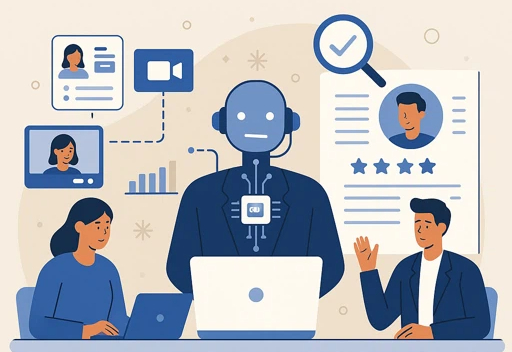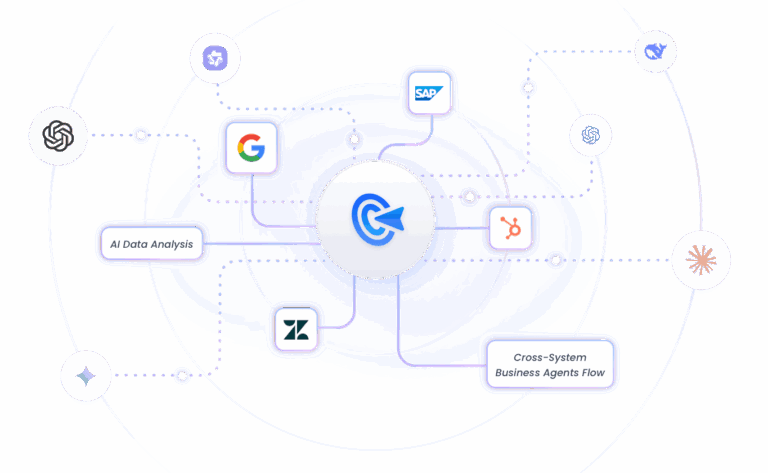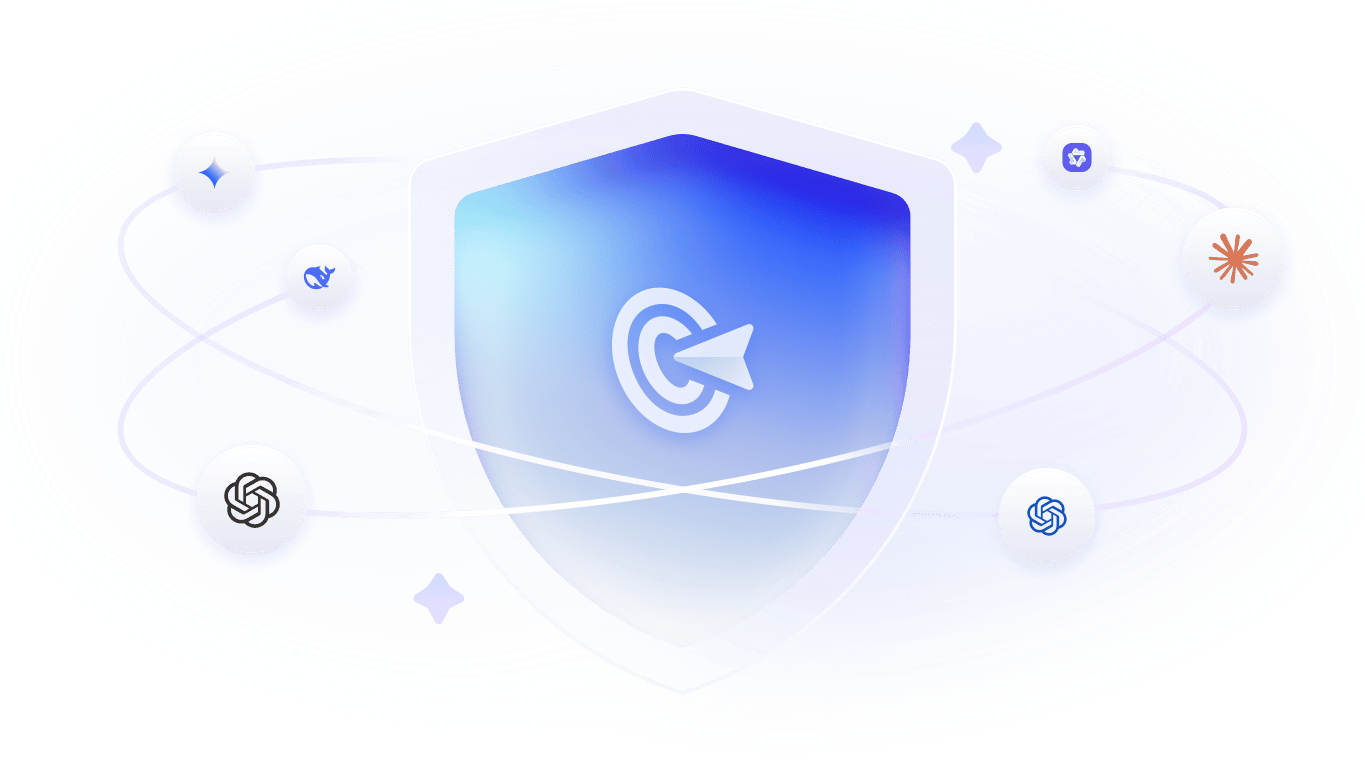- What Is AI Resume Screening?
- The Limits of Today’s AI Resume Screening
- How Agents Step In When AI Screening Tools Fall Short
- 1. Complex Skills & Team Fit
- 2. Cross-Department Coordination
- 3. Rapidly Changing Roles
- 4. Passive Candidate Sourcing
- 5. Continuous Hiring Programs
- Building an Agentic Hiring Workflow with GoInsight.AI
- Phase 1: Foundation
- Phase 2: Intelligence
- Phase 3: Collaboration
- Phase 4: Governance & Scale
- Conclusion
- FAQs
Recruiters once spent nearly eight hours screening 500 resumes. AI tools helped shorten that time, but soon, the limits became clear. Automation handled volume, not complexity.
Today, leading enterprises are moving beyond AI resume screening tools toward intelligent hiring agents that don’t just filter resumes — they collaborate, learn, and evolve with every hire.
What Is AI Resume Screening?
AI resume screening involves using AI-powered tools to review CVs in bulk and shortlist candidates for a particular position. An AI resume screening tool can automatically parse, score, and rank job applications using keywords, skills, education, and experience.
Benefits of using AI for resume screening:
- Efficiency: 67% of hiring leaders say AI’s biggest benefit is saving time, making resume screening faster and more efficient than ever.
- Consistency: AI tools apply the same criteria and filters to every single candidate, allowing recruiters to achieve consistency.
- Scalability: Since AI can process huge volumes of CVs at once, enterprises can use it to support recruitment drives of any size.
- Data Support: With AI screening resume, a recruiter gets scoring data and valuable insights to make informed decisions.
The Limits of Today’s AI Resume Screening
Sure, artificial intelligence has removed many obstacles from the hiring process. But mainstream AI screening tools still have their limitations:
1. Siloed Intelligence
AI based resume screening models often live inside ATS silos, which means they lack real-time inputs from hiring managers or hiring outcomes. These tools act in isolation, producing scores that hiring managers must interpret without a broader context.
A typical AI CV screening tool analyzes the resume against the job description but lacks deeper context about the team's culture, market shifts, or a hiring manager's evolving preferences.
2. Limited Adaptability
Since these systems follow historical data, static criteria, and hard thresholds limit their adaptability. If a hiring manager realizes a specific skill is less important than soft skills after reviewing the first batch of candidates, the AI screening resume tool cannot dynamically adjust. It continues to prioritize the original, now outdated, criteria.
3. Governance Blind Spots
AI models are only as unbiased as the data on which they are trained. Without constant oversight and governance, they can perpetuate and even amplify human biases. Recruiters may not even know when AI is influencing hiring decisions because these platforms don’t provide transparent audit trails or real-time oversight.
That’s why in 2015, Amazon scrapped an AI resume screening tool because it downgraded resumes containing the word “women’s” or graduates of all-women’s colleges.
How Agents Step In When AI Screening Tools Fall Short
If you think about it, AI based resume screening is just one step in a much larger process. Thankfully, AI hiring agents engage with the entire hiring ecosystem, shifting the role of AI from passive filter to active collaborator.
In fact, 44% of HR leaders plan to adopt semi-autonomous AI agents in the next year. This trend reflects a push for deeper intelligence, including agentic workflows that take direction and deliver context-aware actions.

So, what does an AI hiring agent do that a screening tool cannot? Below, we explore key scenarios, the pain points each faces, and how Agents directly address these challenges.
1Complex Skills & Team Fit
⚠️Current Challenges
Most AI resume screening tools match candidates based on keywords and fixed job descriptions. They fail to capture the nuances behind a role, such as the evolving team structure, organizational culture, or what made previous hires successful. As a result, recruiters often receive technically qualified but contextually unfit candidates.
✅How Agent Solves It
An AI hiring agent connects directly with the talent acquisition process, analyzing job briefs, team data, and previous hiring outcomes. It can interpret unstructured feedback from hiring managers and translate them into actionable screening signals. For example, preferences on leadership style or communication fit.
💡Enterprise Impact
This context-driven approach helps enterprises go beyond matching resumes to job specs. Recruiters receive shortlists that reflect both skill alignment and organizational fit, improving first-round success rates and reducing time wasted on unsuitable candidates.
2Cross-Department Coordination
⚠️Current Challenges
In many enterprises, the hiring workflow spans multiple systems — ATS, HRIS, communication tools, and spreadsheets. AI screening tools sit outside this ecosystem, creating silos where candidate data becomes fragmented and updates are easily lost. Recruiters must constantly reconcile information across platforms, slowing down hiring velocity.
✅How Agent Solves It
A hiring agent functions as an intelligent connector. It integrates with existing ATS, HR systems, and scheduling tools to synchronize candidate status, feedback, and communication in real time. When a hiring manager updates notes in one platform, the agent ensures every stakeholder — recruiter, HR partner, and interviewer — has the same view.
💡Enterprise Impact
By aligning people and systems, enterprises can accelerate hiring cycles and reduce administrative overhead. Collaboration becomes seamless, and decision-making is faster because everyone operates from a single source of truth.
3Rapidly Changing Roles
⚠️Current Challenges
Hiring priorities can shift mid-process — for instance, when early interviews reveal a greater need for leadership or cross-functional experience. Traditional AI tools lack flexibility; once screening criteria are set, they must be manually reset or reprogrammed to reflect new insights.
✅How Agent Solves It
An AI agent adapts dynamically. It continuously reweights signals and adjusts evaluation logic based on recruiter feedback and interview outcomes. If a hiring manager signals that soft skills have become more critical than certifications, the agent updates its recommendations automatically, without restarting the search.
💡Enterprise Impact
Recruiting teams gain a dynamic pipeline that evolves in real time with business needs. This agility shortens hiring cycles and prevents wasted time reconfiguring rigid screening systems, ensuring every shortlist remains relevant to current priorities.
4Passive Candidate Sourcing
⚠️Current Challenges
Traditional screening systems are inherently reactive — they only assess incoming resumes. High-value passive candidates, including former applicants or internal talent with transferable skills, often remain undiscovered. Recruiters must manually identify and reach out to them, which is time-consuming and inconsistent.
✅How Agent Solves It
A hiring agent proactively searches across internal talent pools, CRM databases, and approved external sources. It identifies potential candidates that fit nuanced role requirements and can even initiate personalized outreach messages or reminders for recruiters to re-engage promising profiles.
💡Enterprise Impact
With proactive sourcing built in, enterprises can build stronger, more diverse candidate pipelines without expanding recruiter workload. This transforms hiring from a reactive process into a strategic, data-driven talent discovery engine.
5Continuous Hiring Programs
⚠️Current Challenges
Most AI resume screeners are static — they don’t learn from hiring results. After each cycle, insights about what worked and what didn’t are lost, forcing recruiters to start from scratch. Over time, this leads to repeated inefficiencies and biased decision-making.
✅How Agent Solves It
Agentic systems continuously learn from feedback loops — hiring outcomes, recruiter comments, and manager decisions. Each interaction becomes a data point to refine the model. The agent identifies patterns in successful hires and adjusts its logic to better predict future fit, while also improving bias detection and fairness across candidate evaluations.
💡Enterprise Impact
Enterprises gain a self-improving hiring ecosystem that compounds intelligence with every cycle. Over time, this leads to smarter recommendations, higher-quality hires, and a measurable reduction in bias and inefficiency across global recruitment operations.
Building an Agentic Hiring Workflow with GoInsight.AI
Enterprises are increasingly recognizing that AI agents—not single-purpose tools—will define the future of hiring. But turning that vision into an enterprise-grade system remains a challenge. GoInsight.AI bridges that gap, delivering a structured roadmap to build and scale intelligent hiring workflows.

The agentic hiring roadmap powered by GoInsight.AI:
Let’s see how GoInsight.AI helps enterprises turn this vision into an operational reality.
Phase 1: Foundation
The first phase is to integrate existing HR tools and data sources. GoInsight.AI's tool feature allows you connect to ATS, calendar systems, and communication platforms to create a unified data layer.
The idea here is to get the ball rolling with small automations while preserving existing workflows. Repetitive activities typically automated in this stage include parsing new applicants, routing candidates for screening, initial shortlisting, scheduling interviews, and collating feedback.
Phase 2: Intelligence
Once the foundation is laid out, it’s time to deploy specialized AI recruitment agents. In this multi-agent system, each agent has a defined role.
One agent might be responsible for resume analysis and screening, another for initial candidate communication, and a third for tracking hiring manager feedback. Each agent accesses the same data but executes actions according to its pre-set purpose.
Phase 3: Collaboration
In phase 3, the AI agents practically start working across workflows as a team. They propose candidate shortlists, draft screening questions based on role context, and communicate risks to recruiters. Through all of this process, the recruiter remains in complete control, providing human-in-the-loop supervision to guide the process and make final decisions.
Phase 4: Governance & Scale
Finally, GoInsight.AI’s security and compliance layer ensures data privacy, access control, and full auditability for AI-driven recruitment. With these guardrails in place, organizations can scale their agentic workflows globally, replicating best practices across departments and regions while maintaining transparency, standardization, and trust.
The role of GoInsights.AI is to orchestrate this entire transformation. The platform doesn’t replace recruiters but provides enterprises with the infrastructure to move their recruitment drives from transactional screening to strategic, intelligent operations.
30 days Free TrialConclusion
AI resume screening is the necessary first step to reduce the labor-intensive part of recruitment, decrease workload, and achieve consistency. But the truth is, screening is never the finish line. Agentic hiring extends automation into context-aware collaboration, continuous learning, and governed decision-making.
AI hiring agents allow enterprises to build intelligent, adaptive, and fair hiring ecosystems. As a result, recruiters gain speed without losing nuance, whereas HR teams gain repeatability along with traceability. AI screening is an important milestone. Now enterprises must take charge of what comes next.






Leave a Reply.